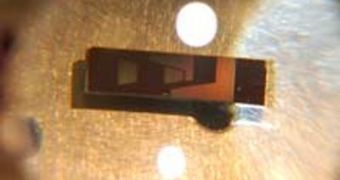Speeding up optical signals is usually a very costly process that involves a number of bulky machines, as well as a huge amount of energy. In a research meant to find ways of getting past this obstacle in development, experts at the Cornell University have recently developed a new, silicon-based time lens, which fits on a chip, and is able to considerably boost the speed of optical signals, while remaining energy-efficient. According to Technology Review, the time lens could not only be used to transfer huge amounts of data over the Web, but also between optical components inside computers.
Data streams flow through optical cables encoded at about 10 gigabits per second. While this speed is great in itself, experts know that much larger ones can be attained. The new silicon device is able to split up optical signals, and then combine them back at an encoding rate that allows them to travel at a speed of about 270 gigabits per second. Achieving such a performance was no walk in the park, as previous studies on the issue all came to a standstill at a certain point.
“As you get to very high data rates, there are no easy ways of encoding the data,” Cornell University Professor of Applied and Engineering Physics Alexander Gaeta explains. He has been one of the main developers of the new silicon time lenses, alongside colleague Michael Lipson, who is a CU associate professor of electrical and computer engineering. Their accomplishment is detailed in a new paper, published in the latest issue of the renowned scientific journal Nature Photonics.
“Power consumption is becoming a more constraining issue, especially at the chip level. You can't have your laptop run faster without it getting hotter,” Columbia University Professor of Electrical Engineering Keren Bergman, who has not been involved in the new research, says. One of the main hurdles in creating faster optical systems is the fact that photons do not like to interact with each other. The silicon chip that the scientists devised is able to compress already-encoded optical data to even higher speeds, the team reports.

 14 DAY TRIAL //
14 DAY TRIAL //